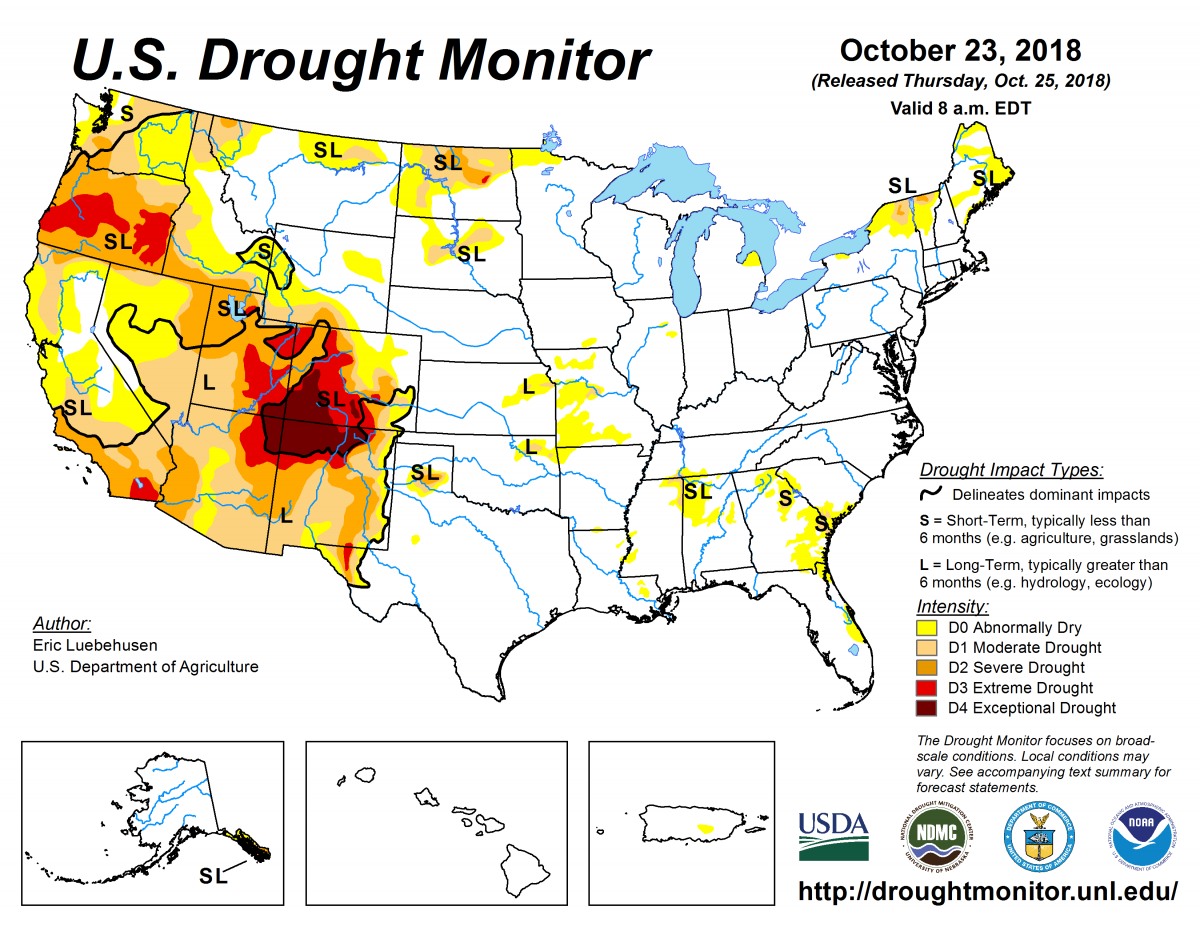
According to the October 23, 2018, U.S. Drought Monitor, moderate to exceptional drought covers 20.4% of the United States, a slight decrease from last week’s 20.5%. Extreme and exceptional drought—the worst categories—also contracted to cover 4.0% of the nation, down from 4.1% last week.
The atmospheric circulation during this U.S. Drought Monitor week was dominated by an upper-level trough over the eastern contiguous United States and a warm, dry ridge over the West. An upper-level low pressure system was trapped over the Southwest for much of the week, bringing above-normal precipitation and cooler-than-normal temperatures to that region. Cold Canadian air masses were funneled into the United States beneath the eastern trough, with the cold fronts keeping the week colder than normal for much of the country east of the Rockies.
Gulf of Mexico moisture overspread the fronts as they lay across the Gulf Coast, making the week wetter than normal for much of Texas and a strip northeastward along the Appalachians. The week ended with Hurricane Willa making landfall along the northwestern Mexican coast, and its remnants poised to bring additional moisture to Texas and the U.S. Southeast during the next U.S. Drought Monitor week.
Otherwise, much of the Lower 48 was drier than normal this week. There was some contraction of drought in the Southwest, southern Plains, and New England, and a little expansion of abnormal dryness in the Southeast, but otherwise very little change in the drought status.

The full U.S. Drought Monitor weekly update is available from Drought.gov.
In addition to Drought.gov, you can find further information on the current drought as well as on this week’s Drought Monitor update at the National Drought Mitigation Center.
The most recent U.S. Drought Outlook is available from NOAA’s Climate Prediction Center and the U.S. Department of Agriculture provides information about the drought’s influence on crops and livestock.
For additional drought information, follow #DroughtMonitor on Facebook and Twitter.



